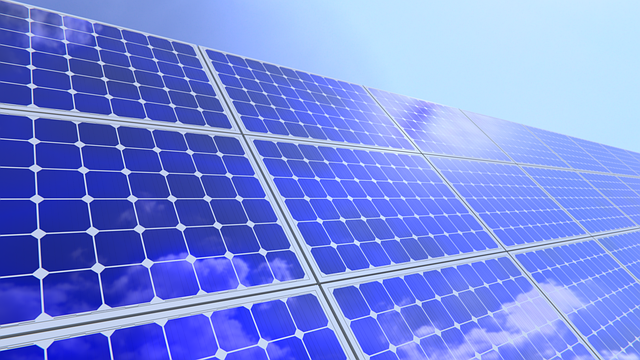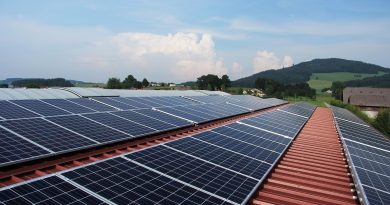Setup-On-Grid Solar Power System: Understanding the Basics
Solar power is becoming increasingly popular as a clean and sustainable source of energy. There are various types of solar power systems available, including setup-on-grid solar power systems. This blog will discuss what a setup-on-grid solar power system is and how it works.
What is a Setup-on-Grid Solar Power System?
A setup-on-grid solar power system, also known as a grid-tied solar power system, is a system that is connected to the local electric grid. It is one of the most common types of solar power systems used in residential and commercial settings. Unlike off-grid systems, which are self-sufficient and not connected to the electric grid, setup-on-grid systems allow users to both generate and consume solar energy while still being able to rely on the grid when needed.
How Does it Work?
A setup-on-grid solar power system consists of three main components: solar panels, inverters, and the electric grid. The solar panels, typically installed on rooftops or in open spaces with optimal sunlight exposure, capture sunlight and convert it into electricity. This electricity is in the form of direct current (DC), which is converted into alternating current (AC) by the inverters.
The AC electricity generated by the setup-on-grid system is then used to power the electrical appliances and devices within the building or facility. If the solar panels generate more electricity than the building’s energy needs, the excess energy is fed back into the electric grid. This process is known as net metering, where the excess energy is measured and credited to the owner’s account. Similarly, when the solar panels do not generate enough electricity to meet the building’s demand, the deficit is compensated by drawing energy from the grid.
Advantages of a Setup-on-Grid Solar Power System
There are several advantages to using a setup-on-grid solar power system:
1. Cost-Efficient: Since setup-on-grid systems rely on the electric grid as a backup, there is no need for expensive energy storage solutions such as batteries. This significantly reduces the overall cost of the system.
2. Reduced Energy Bills: By generating electricity from solar panels, setup-on-grid systems can significantly reduce energy bills. The excess energy produced is sent to the grid, earning credits that can offset energy consumption during times when solar energy is insufficient, such as at night.
3. Environmental Benefits: Setup-on-grid systems greatly reduce reliance on fossil fuel-based energy sources, thereby reducing carbon emissions and contributing to a greener and cleaner environment.
4. Easy Maintenance: Setup-on-grid systems require minimal maintenance, with routine checks on the solar panels and inverters being the main tasks. This makes it a hassle-free energy solution for homeowners and businesses alike.
Considerations for Installation
When considering installing a setup-on-grid solar power system, there are several factors to be taken into account:
1. Available Space: Adequate space is required for the installation of solar panels. Rooftops, open fields, or any unobstructed area with maximum sunlight exposure are ideal.
2. Sunlight Availability: The effectiveness of a setup-on-grid system is dependent on the amount of sunlight available. Different regions have varying solar insolation levels, so it is essential to assess the viability of solar power in your area.
3. Grid Connection: A reliable and stable grid connection is necessary for a setup-on-grid system to function effectively. Ensure that the local electric utility allows for net metering, as this is crucial for feeding excess energy into the grid.
4. System Size: The size of the solar power system should be proportionate to the energy needs of the building or facility. It is recommended to conduct an energy audit to determine the required system capacity.
Conclusion
Unlock the power of the sun with SolarClue®’s setup-on-grid solar power systems – a practical and cost-effective solution for harnessing solar energy. By seamlessly connecting to the electric grid, users enjoy the benefits of solar power with the added security and convenience of the grid as a backup. Experience reduced energy costs, environmental benefits, and easy maintenance, making setup-on-grid systems an excellent choice for both residential and commercial applications. When contemplating the installation of a setup-on-grid solar power system, assess factors such as available space, sunlight availability, grid connection, and system size for optimal performance. Embracing solar power through setup-on-grid systems is a smart step towards a sustainable and greener future with SolarClue®.
Frequently Asked Questions
A setup-on-grid solar power system is a solar energy solution that connects to the electric grid. It allows users to harness solar power while having the grid as a backup for stability and reliability.
The system captures solar energy through photovoltaic panels and converts it into electricity. Excess energy can be fed back into the grid, and the grid acts as a supplementary source during periods of low solar production.
Benefits include reduced energy costs, environmental sustainability, and the convenience of grid backup. It’s a cost-effective solution suitable for both residential and commercial applications.
Consider factors such as available space for solar panels, the amount of sunlight your location receives, and the feasibility of connecting to the local electric grid.
Setup-on-grid systems are known for their low maintenance. Regular cleaning of solar panels and occasional system check-ups are usually sufficient.
Depending on your location, there might be incentives such as tax credits, rebates, or net metering programs that can enhance the financial benefits.
Contact SolarClue® for a personalized consultation. Our experts can assess your needs, provide information on available solutions, and guide you through the installation process.
The setup-on-grid system is connected to the local electric grid, allowing for a bidirectional flow of electricity. When your solar panels generate excess energy, it can be fed back into the grid, and you can draw electricity from the grid when needed.
Yes, it can, but typically, it requires additional equipment such as a battery storage system to provide backup power during grid outages. SolarClue® can help customize a solution based on your needs.
Installation times can vary based on factors like system size and complexity. Typically, a residential setup-on-grid system can be installed within a few days. SolarClue® ensures efficient and timely installations for minimal disruption.



